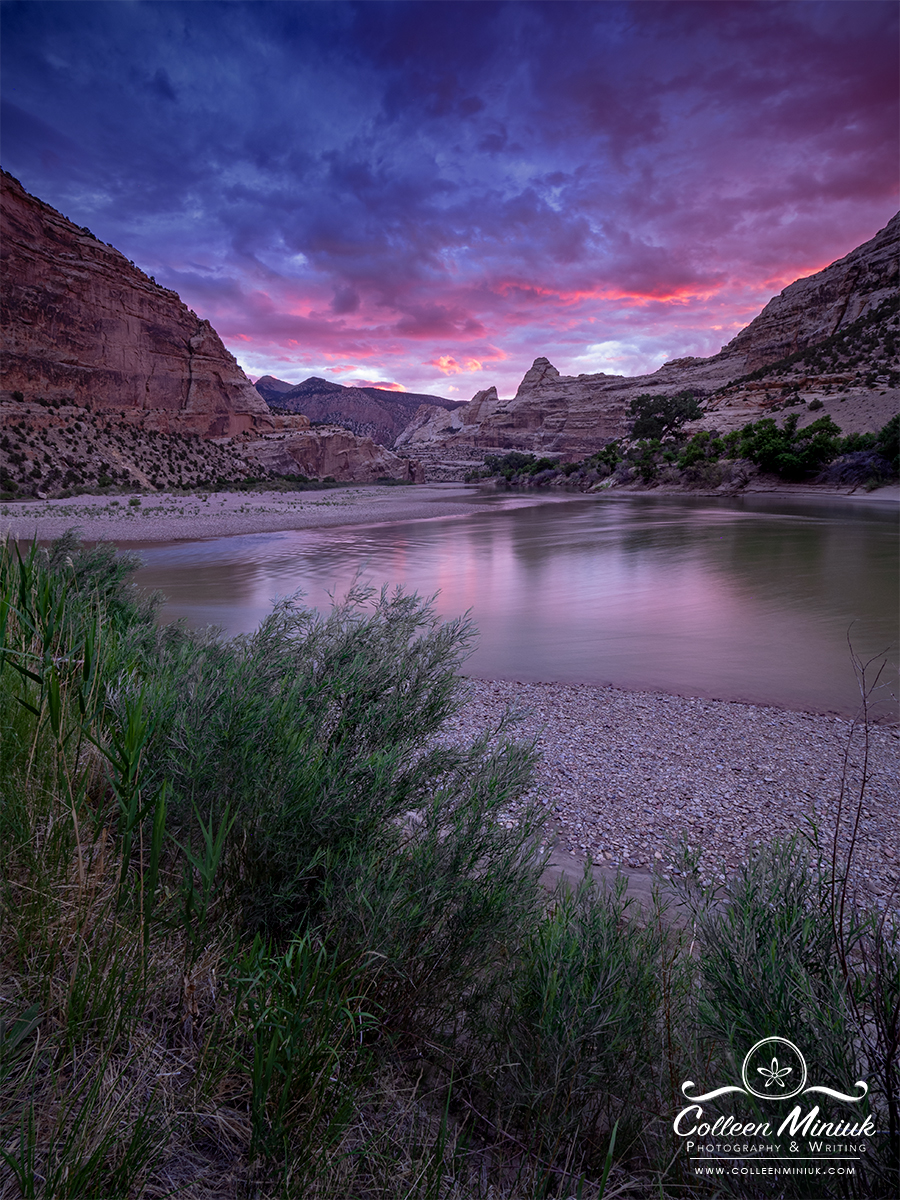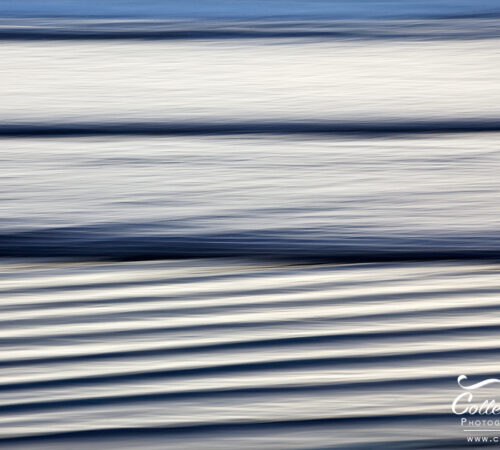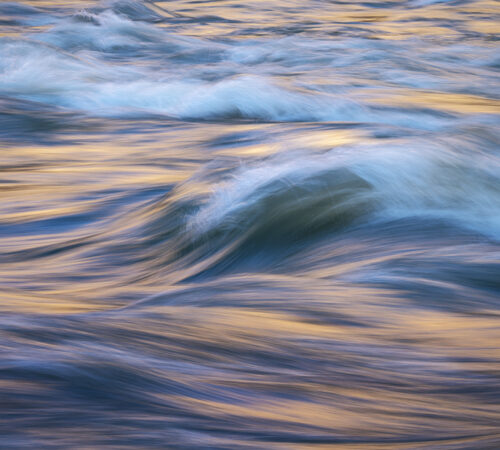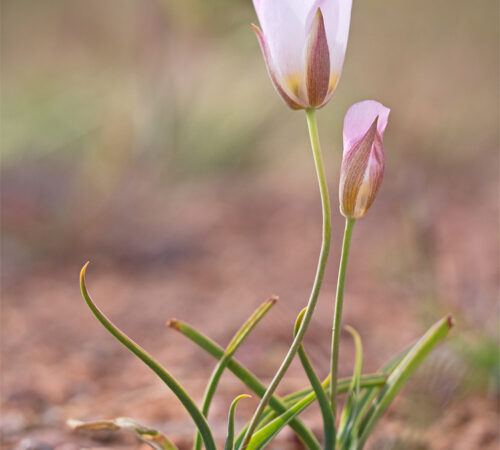Mind Your Monkey Mind

Dear Bubbles:
When you go on a shoot, how do you quiet the chatter in your head? I get out there and sometimes it feels like a monkey jumped into my brain. Sometimes I can’t get it to shut up, and then I can’t make an image to save my life. I start off so excited then end up coming home so frustrated. How do you do it?
~A Babbler
Dear A Babbler:
Of surprise to absolutely no one who knows me, growing up, I tended to get a little excitable about something that fascinated me. (I still do!) In junior high, when this would happen, I had a friend who would grab me by both shoulders, look me straight in the eyes, and say in a stern, authoritative voice, “Colleen, calm your bad self down.”
Gosh, there’s just so much in this world to see and do and feel and taste and smell and…and…and…squirrel!
The rapid pace of the Information Age hasn’t helped this (or my brain). We live in a time of such quick development, seemingly constant communication, and easy access to an abundance of resources. We can often feel overstimulated. Between family obligations, life responsibilities, and trying to keep up with the news and social media, it’s sometimes hard to relax. We schedule vacations to escape it all only to find our brains don’t turn all of that off just by flying to a new place and sleeping in a new bed. The pressure only increases if you’re a photographer who has a mere three days to see it all and photograph it all—and OMG THE LIGHT IS HAPPENING RIGHT NOW! Gah! With all that goes on up there in our heads, it’s amazing we are able to make photographs at all…
Creative experts don’t know how the “aha” moment happens but they do know it happens most frequently when your prefrontal cortex is relaxed. Like when you’re sleeping. Like when you’re taking a shower or on a long drive. When you aren’t really thinking about anything at all. The same goes for making photographs. Learning how to tame that spastic monkey in our brain—or at least learning how to work with—will lead to not just better images you’re proud of but also a more meaningful, richer field-based experience.
Many of my early photography outings used to result in same way yours did. I used to try to calm my bad self down by humming a song—Flora’s Secret by Enya—over and over again until the flurry of thoughts faded. Doing so certainly put me into a more relaxed mood which made for at least a better start to my photographic outings. Many times, though, it did little to inspire me to create photographs I was proud of. I still felt overwhelmed by all the possibilities in the field, still relied upon external factors to take a picture (e.g. “good” light), and still came home super annoyed I hadn’t been able to fill my film rolls and memory cards with amazing images that National Geographic would put on their front cover.
I still like to sing while I’m in the field (although now my repertoire has expanded to more than one song. Still off-key!) Me humming or singing is typically an indicator that I’ve reached the blissful flow state. After researching how the creative process works, though, I’ve changed my approach to quiet my mind. Now, I aim to achieve what Zen Buddhism calls “mushin,” or “mind without mind.” Here’s how I approach this:
Express gratitude: When arriving at a location, before even thinking about making an image, pause to thank the universe for giving you the honor and privilege of experiencing the place at this moment in time. This may sound cheesy, but it helps me set the stage for my outings in a positive way that makes me feel good from the start (as opposed to thinking about all the stresses I’ve left behind). Even in the most challenging of times, there is much to be thankful for.
Give your monkey permission and space to play…for a little bit: If you feel excited about being in a location, don’t fight it. Embrace it! Set a timer and let your monkey brain go absolutely bonkers for 5 or 10 minutes or however long. The crazier, the better. Howl like a monkey, jump from rock to rock, chase the metaphorical squirrel. Once the time has expired—and this takes discipline and practice—direct your brain to focus on calmer pursuits, things like combinatory play, mindfulness, and taking inventory (which I’ll explain below).
Embrace combinatory play: Albert Einstein suggested “the act of opening up one mental channel by dabbling in another” is “the essential feature in productive thought”. I do not “go out on a shoot.” I go for a hike, a climb, a paddle, a drive, etc. and my camera just comes with me in case I happen to notice something I deem worthy enough to photograph along the way. Most, if not all, of us did not get into photography because we loved pressing buttons on our cameras (which we could, in theory, accomplish at home). I love photography because it gets me outside. It helps me discover and connect with nature, with things bigger than I am as a human being. It permits me to breathe in the fresh air, to feel awe and wonder, to feel alive. Ask yourself, “What else do you enjoy doing beyond photography?” Paint? Write haikus? Drink wine? Go do that—but don’t forget your camera! By playing, you’re giving your brain a form of distraction. Not thinking about something is usually—and ironically—when some of our best ideas arise.
Ditch expectations of making a photograph: The only expectations I hold for myself when I go for a hike, climb, paddle, or drive are to experience the moments ahead exactly as it’s presented to me; to learn about myself, my craft, and the world around me; and to have a fun time. I have zero expectations of making an image, let alone a good one. I also carry no expectations of what weather conditions I might encounter, what the light will do, and other factors I don’t control. Expectations are the killer of joy. Besides, it’s easy to exceed expectations you never have in the first place.
Approach with mindfulness: Instead of thinking about making a photograph (which is the fastest way to not make a photograph) and instead of thinking about how good or bad the light is (and other unnecessary judgments), keep your camera in your bag, and simply pay attention to the world around you in the present moment without judging what you’re experiencing. Do you hear the crow caw? What do the waves sound like? What does the rose smell like? How many trees surround the beach? What color is the rock next to you? You can sit still or move about. Walking meditation, which is similar to “forest bathing,” is an effective way to use your energy to immerse yourself and contemplate the world’s treasures, big and small, through all your senses. (You guessed it, it’s combinatory play!) Practicing meditation at home (or in the field), where you concentrate on noticing, acknowledging, and redirecting your thoughts can help you gain greater control over what’s happening upstairs which can lead to a greater sense of peace.
Let the landscape talk to you: I used to think this guidance was a little woo-woo new-agey. Now I get it. In order to hear what the landscape has to say, you have to be willing to listen—and be willing to listen to yourself as you respond to it. My “aha” moments usually starts with me saying something like “Oooooh, look at that!” Then I stare at “that” for three seconds or longer, typically admiring whatever “that” is. Then I run through collecting an inventory in five categories to help formulate a photographic vision from noticing what I’m noticing:
- Visual: What are the individual visual elements present at your location Tree. Rock. Waves. This is where we identify literal interpretations of the landscape. These are the cards we were dealt at any given moment that we can decide to include–or eliminate–in our photographic frame.
- Spatial: How are the visual elements related to each other? How are they interacting with each other in the scene? What’s bigger and smaller? What’s closer and farther away? Knowing how elements relate to each other helps us determine perspective, depth of field, lens choice, and story.
- Temporal: How do the visual elements fit into the space of time? What time of day is it? What season are they in? How are they evolving on their own schedule? How does time contribute to your visual message?
- Sensory: How does the scene make you feel? Incorporate all your senses, not just sight. How does the wind feel on your skin? What does the seaweed taste like? What does the rose smell like? Oftentimes, opening up my sensory experience triggers ideas while sorting out my inner inventory.
- Inner: What inner emotions or meaning does the scene trigger for you? How are you feeling? How are you responding to the landscape and why? Memories often come up in this stage. So do metaphorical associations and conceptual blends by asking, “What else is it?”
Change the narrative you tell yourself: The voices in our heads like to tell us we aren’t good enough, that our images aren’t as awesome as so-and-so’s on Instagram, that what we come up with is dumb, that no one is going to like what we create anyhow so why bother. Thoughts are just thoughts. They are not reality. If we are capable of making up negative narratives, we are equally capable of making up positive ones. Pay attention to what you tell yourself. If you catch yourself on a downward spiral, reframe the statements into something more positive. Instead of “I’m not good enough,” tell yourself, “I’m doing the best I can.” Instead of “Seeing a face in the rock is stupid,” tell yourself, “How fascinating that I spotted a face in the rock. I wonder who’s face it is?!” You aren’t lying to yourself (certainly not any more than you’re already lying to yourself with a negative narrative…). From what I’ve experienced, nothing bad comes from being kind to yourself. Feeding yourself more positive encouragement will lead to less pressure, more relaxation, and a more enjoyable experience. Doesn’t that sound more appealing than going home frustrated?
The trick isn’t to stop thinking (or stop monkeying around). We can use the analytical parts of our brain to help guide us through the chaos to greater creativity and more meaningful expressions. The trick is to apply your brain power to think about the world in ways that are productive to your photography and life.
Be well, be wild,
Bubbles
Have a question about photography, art, and/or the creative life? Need some advice? Looking for inspiration? Send your question to Dear Bubbles at [email protected] to be possibly featured in a future column post. (If you’d prefer a different display name than your real first name, please include your preferred nickname in your note.





One Comment
David Miller
Good advice. Years ago I started carrying a second lightweight fixed lens camera in addition to my larger kit. It seemed I’d no sooner finish capturing images in what I had judged to be the ideal location when I’d walk around the bend in the trail and Eureka! I found having the second camera readily available reduced the stress level associated with missing “the shot.” Being relaxed I found myself becoming more immersed in the environment and able to experience it more fully…and interestingly care less about getting “the shot.”